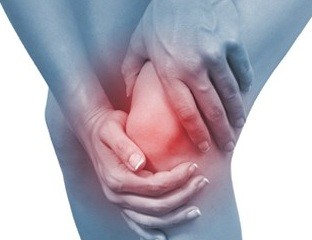Key Points:
- Evidence supports exercise, education and weight loss as first line treatments for OA
- Manual therapy and acupuncture are adjuncts and should not be used in isolation to treat OA
- Knee arthroscopy is no better than placebo, and should be avoided
- Any considerations of joint replacement should be discussed with your health care tea
Osteoarthritis (OA) is extremely common, with 1 in 11 Australians reporting having the condition. That figure increases to whopping 1 in 3 in people over the age of 65, and it is listed as one of the leading causes of physical inactivity in this age group. Given OA can have such a burden on the individuals who have it, and the health care system, it is time that we as physios start to differentiate what is High Value Treatment, and what is Low Value Treatment for hip and knee OA.
 What is High Value Treatment for hip and knee Osteoarthritis? So, what works for OA? Scientific research tells us that the best results come from a combination of exercise, education and weight loss, and that this should be the first line management for anyone seeking treatment for OA, no matter how severe.
What is High Value Treatment for hip and knee Osteoarthritis? So, what works for OA? Scientific research tells us that the best results come from a combination of exercise, education and weight loss, and that this should be the first line management for anyone seeking treatment for OA, no matter how severe.
A common misconception is that OA is a “wear and tear” disease, and that continuing to use a joint with OA will only make it worse. As joint cartilage doesn’t have a blood supply, it actually relies on joint movement and exercise for its health. As we move, joint fluid is pushed in and out of the cartilage making it healthier. There are many other benefits of exercise including improved mental health, reduced inflammation, and improved confidence with movement that science also tells us can reduce the experience of pain with OA.
Learning about the causes of OA, the process of the disease and what you can do to treat it can have a profound effect on the outcomes of OA management. Our experience of pain is not an indication we are damaging our tissues, but more our brain trying to protect us when it feels threatened. When we don’t understand what is happening to a painful joint, this sense of threat can be higher. Research has shown that learning about OA and why we feel pain can reduce the fear associated with performing movement and exercise, and optimise the benefits we get from completing it.
The benefits of weight loss for OA are twofold. Firstly, losing weight can reduce the load through a weight bearing joint by a substantial margin. Secondly, carrying excess weight can stimulate low grade inflammation in the body, further irritating painful joints and progressing the OA process. Scientific studies have shown that reducing weight by as little as 5-10% can improve symptoms significantly.
What about manual therapy, acupuncture or taping? Treatments such as manual therapy, acupuncture and taping can be considered as adjuncts, or treatments that can be used alongside High Value Treatments to complement them. However, used by themselves, these treatments have been found to be ineffective at providing any long-term benefits. They are therefore considered Low Value Treatments.
What about Surgery? Commonly performed surgery for knee and hip OA include arthroscopy and joint replacement. The evidence for arthroscopy is not favourable. Research trials for hip arthroscopy are currently underway, so at this stage we are not entirely sure of its benefit even though it is still widely used. But in the case of knee arthroscopy, it is definitive. Knee arthroscopy for OA is no better than placebo, and offers nothing in addition to High Value Treatment such as exercise. Arthroscopy for knee OA is Low Value Treatment and should be avoided. Joint replacement or arthroplasty can be effective for the right person. The right person is usually someone who is significantly disabled by their joint pain, and has attempted an extended period of High Value Treatment with little benefit. Arthroplasty in this population can improve function and quality of life. However, it is a big undertaking and it isn’t always successful. Research tells us that up to 20% of people receiving a total knee replacement will be left with chronic pain or have complications following surgery. Decisions around surgery should always be made in consultation with your health care team.
So, looking at the scientific literature we can differentiate between High Value Treatment and Low Value Treatment for knee and hip OA. First line management should always include exercise, education and weight loss, and these High Value Treatments can be delivered by your local physiotherapist. Any considerations of surgery should always be discussed with your health care team.


